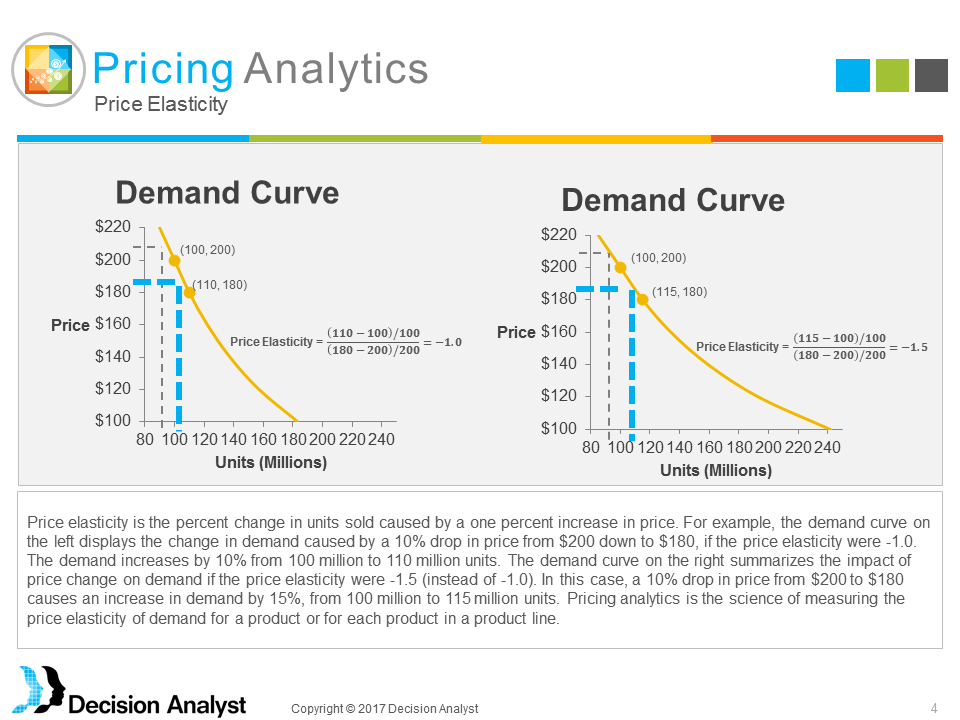Insider Series Webinar
Pricing Analytics: Are You Leaving Money On The Table?
presented by John Colias, Ph.D. and Elizabeth Horn, Ph.D.
In this webinar, we review analytical methods used to measure price elasticity and explain how price elasticity can used to support business pricing strategy, whether for an existing product line or for a new product. Attend this webinar to:
- Learn how choice modeling helps businesses set price based on predicted revenue or profit, customer value, customer segment, marketing channel, or geography.
- Understand when choice modeling overstates price elasticity and how to correct for that shortcoming.
We will discuss several of the most important strategic-pricing objectives that firms often set as they pursue a business strategy. In particular, we will outline several analytics methods used to measure price response, providing pros and cons, advantages and disadvantages, providing examples along the way.
We will discuss five different business-pricing strategies.
- The most common pricing strategy is to set prices in such a way as to maximize product-line revenue or profit. In some cases market share may need to be maximized, particularly in the early stage of rollout for a new product.
- A second strategy is to set prices to maximize the customer’s perceived value. By this we mean to differentiate a product line so that prices are higher for upper-tier products (which have features and benefits which are most highly valued by customers) and prices are lower for lower-tier products (which have features less-highly valued by customers.)
- A third strategy is to customize price based on customer segment. The idea is to charge more for those customers who are willing to pay more. This is a price-discrimination strategy (which may be effective in some markets), but it should be approached with caution since there must be a good reason to charge different customers different prices for the same product. For example, if it cost more to deliver to certain buyers, or competition is stronger among certain demographics, then, price discrimination may be justified.
- A fourth pricing strategy is to set prices differently by purchase channel. For example, Walmart might have a lower price for an organic food product vs. the price at a specialty organic grocery chain.
- Finally, optimizing price for a new product is often a difficult task because consumers and suppliers might not have a benchmark. In this case, special pricing analytical methods are required.

Contact Decision Analyst
If you would like a pdf copy of the presentation please contact either John Colias, Senior Vice President, he can be emailed at jcolias@decisionanalyst.com or Beth Horn, Senior Vice President of Advanced Analytics, she can be emailed at ehorn@decisionanalyst.com. Both presenters may be reached at 1-800-262-5974 or 1-817-640-6166.

